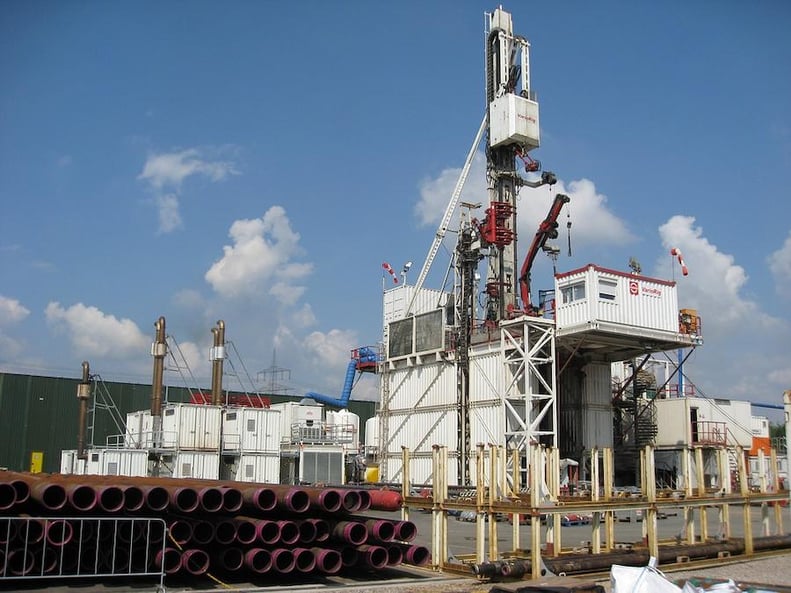
Oil and gas operators know that every aspect of oil and gas inspections is complicated.
Having the right system can either make or break your oil and gas operations.
Your complex technical onsite or home inspections are not straightforward and everything you need to meet demanding Your complex technical inspections are not straightforward and everything you need to meet demanding oil and gas requirements are not best suited to manual reporting.
When the first computer spreadsheets were invented, they were bleeding edge. VisiCalc for Apple II by VisiCorp in 1979 was the first spreadsheet for personal computers. SuperCalc by Sorcim quickly followed it in 1980, Lotus 1-2-3 for IBM PC in 1981 and Microsoft Excel in 1985.
Excel established itself as the de facto leader in the spreadsheet market by 1995. But software and technology ages fast as well as the inspection techniques used– and what was bleeding edge in the 80s and 90s is decidedly primitive by today's standards. And yet, the oil and gas industry is one of many still leveraging Excel to perform crucial business functions – and it remains the go-to tool to create and maintain inspection checklists not limited to equipment inspections.
Numerous inspection services, both from Microsoft and third-party developers, are available online, covering oil and gas reserves, natural gas, as well as a spreadsheet program. It's therefore not surprising that Excel remains the preferred visual inspection tool for most professionals working in the oil and gas sector, especially when utilizing NDT methods (non-destructive testing methods).
Unfortunately, as far as oil and gas, and professional property inspections go, Excel is ancient for reporting– practically a Stone Age relic. If you are still using Excel for your oil and gas inspections, you should immediately transition to a fully digital system.
Here are five strong reasons why.
1. Reduced Human Error
Excel may be fine when dealing with a few rows of checklists, which may easily be handled by your onsite office manager. However, as the rows and worksheets increase in line with the number of individual items that require inspection, so too does the probability for error.
A seemingly small human error in the oil and gas industry can lead to increased business costs and a catastrophic event in the worst-case scenario. To address these challenges effectively, it's crucial to integrate data analysis tools, retrieve data, and manage gas production processes meticulously.
Many deadly oil and gas disasters, such as the Bhopal gas disaster and the Deep Horizon oil spill, were caused by human error.
Let's take a common scenario when inspecting offshore facilities to illustrate. Helicopters typically fly oil and gas inspectors from the mainland. Once they complete the visual inspections, they fly back to the mainland, compile and analyze their results, and write a report.
If they made an error such as failing to fill in a field, the inspection is incomplete.
To complete the inspection, they would have to fly back, increasing transport costs for the business. The same scenario can also lead to a catastrophic event if the inspector decides, without evidence, that the missing information about oil production, gas reserves, and data analysis isn't critical and opts to submit the report without it.
A good digital system has built-in controls that signal inconsistencies to prevent this sort of situation. In-built digital forms and digital inspection checklists ensure the inspector doesn't miss anything. The entire inspection process is conducted, completed, and the results analyzed at the site, all for a very fair price.
Read 5 Steps to Measure Oil and Gas Vendor Quality
2. Boost Productivity
The process of capturing inspection data using paper checklists and entering the same data into a spreadsheet is task repetition.
Inspectors frequently need to return to an office following an inspection to compile data, analyse findings, and prepare a report. The scope of the project may necessitate the involvement of two or more inspectors. The current process involves inspectors transcribing field notes onto intricate forms and Microsoft Office documents, all while integrating external data regarding oil reserves. Regrettably, this approach proves to be sluggish and highly inefficient.
With digital technologies, an inspector cuts inspection time and is left with extra hours to dedicate to other industry standards tasks.
3. Real-Time Data
Excel spreadsheet data suffers from limited visibility, leaving stakeholders in the dark. Communication regarding inspections relies solely on emails, resulting in a sluggish information flow. Consequently, the timely exchange of critical issues and knowledge is impeded.
The transition to digital technologies by oil and gas companies brings about a transformative change, facilitating swifter information dissemination, robust data storage, and the ability to vividly visualize data. This collective improvement significantly enhances overall organizational performance.
All relevant parties view all the entered data instantly. Inspections can add more context to inspections by adding annotated images.
Read How to Effectively Manage Oil and Gas Facility Inspection Plans
4. Analytics
One of the biggest drawbacks of Excel and the accompanying manual processes is the difficulty in gleaning actionable insights from the data. The raw data from the paper checklists go into an Excel file.
It then has to undergo further processing by someone skilled in business analytics to extract trend information and other data relationships that decision-makers can leverage in the future. Inadequate inspection data analytics and performance measures impede progress towards the prevention of recurring issues and continuous improvement.
This isn't the case with a digital inspection platform. Captured data can immediately be analyzed, checked, and visualized to see trends and learn.
5.Consistent Safety and Quality; In the Oil and Gas Industry
Finally, digital inspection technologies improve the quality of inspections and ensure consistent safety and quality. Unlike Excel that, to a large extent, lacks consistency, a digital platform ensures consistent companywide processes that result in a solid quality and safety program.
In a digital platform, specific fields can be made mandatory, and there is the added functionality to upload images and add notes for better context. Staff can also share data and collaborate in real-time without breaking social distancing rules that have become the new norm since the COVID-19 pandemic began.
Reliance on email as a deficiency communications platform lacks the controls necessary for holding vendors and subcontractors accountable for quality and safety. A digital inspection form ensures a clear inspection trail to improve accountability and demonstrate compliance to government regulations.
Replace Excel and Maximize Efficiency with FTQ360
Leverage all the benefits mentioned above and more with FTQ360 oil and gas inspection software.
The tool comes with efficient inspections coupled with automated workflows and data-driven program management as well as detailed inspection reports you and your inspection team can take advantage of. The benefits, at a glance, are as follows:
- FTQ360 is a versatile inspection platform that replaces a multitude of forms and Excel spreadsheets.
- The tool has a mobile application that documents field observations easier and better for faster automatic report generation and issue communication. This feature eliminates non-productive activities such as transcribing notes and generating multiple emails.
- It is a consistent global quality and safety management platform with real-time visibility for planning, monitoring, and controlling inspections and deficiencies.
- The program comes with powerful inbuilt analytics for managing vendor performance and accountability, reducing risks, and improving first-time quality and safety.
If you would like to find out how FTQ360 can help you go paperless, replace Excel and maximize organizational efficiency on your gas inspection, book a free demo today.

